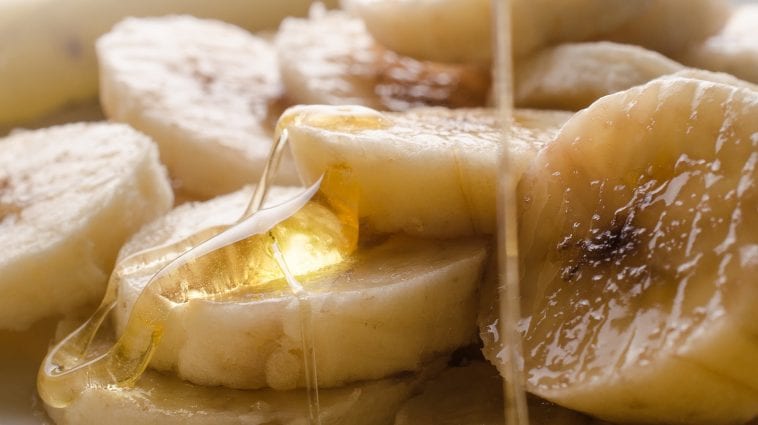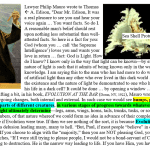[Originally published as Radioactive Honey]
Radioactivity is everywhere. You can’t get away from it.
Even the foods you eat are radioactive, since the molecules in your food have chains of carbon atoms in them, and some of those carbon atoms are radioactive. However, one of the most radioactive foods is the lowly banana. It contains a lot of potassium, and about 0.01% of that potassium is radioactive, spewing beta particles and gamma rays into the surroundings.
In fact, there is an informal radiation unit called the banana equivalent dose, which allows you to get an idea of how dangerous common forms of radiation are. A dental X-ray, for example, gives you about as much radiation as 2.5 bananas, while flying across country exposes you to about 400 bananas’ worth of radiation.
The radiation in a banana is natural, and because your body contains the same atoms as the foods you eat, you are naturally radioactive as well. Of course, technology has increased the amount of radiation in food and people, and sometimes, that increased radiation can be traced to specific events.
For example, scientists from the College of William & Mary as well as the University of Maryland have studied the radioactive content of honey in the United States. They have found that it is surprisingly rich in radioactive cesium, which is not natural. It is produced by nuclear weapons and the tests associated with them. Plants require potassium to live, but cesium and potassium have similar chemical properties (anyone who has taken my chemistry course should know why), so plants can take up and use cesium instead, including the radioactive cesium made by an atomic bomb.
The researchers found that while there were no atomic bombs exploded in or around the eastern United States, the honey found there has detectable amounts of radioactive cesium.
More importantly, there is a definite pattern to how much is found. There is significantly more radiation found in honey made in the southeastern United States, particularly Florida. In fact, the honey found in Florida can be as much as 500 times more radioactive than the honey found farther north.
Now that sounds scary, but in fact, even the most radioactive honey they analyzed had only 18% as much radiation as a banana. Thus, it poses no threat to people who eat it, but we don’t know if it affects the bees that make and eat it. However, it does tell scientists that the radioactive materials released in nuclear explosions are not dispersed evenly throughout the world. Instead, weather patterns tend to concentrate them in specific regions.
The other thing the research shows is that the more potassium found naturally in the soil, the less radioactive cesium found in the honey. Thus, even in Florida, honey from regions where the soil had a high potassium content was less radioactive than honey from regions where the potassium content was lower. As a result, if you want less radiation in your honey, you need to make sure the flowers from which it is made are grown in soil that is rich in potassium.






